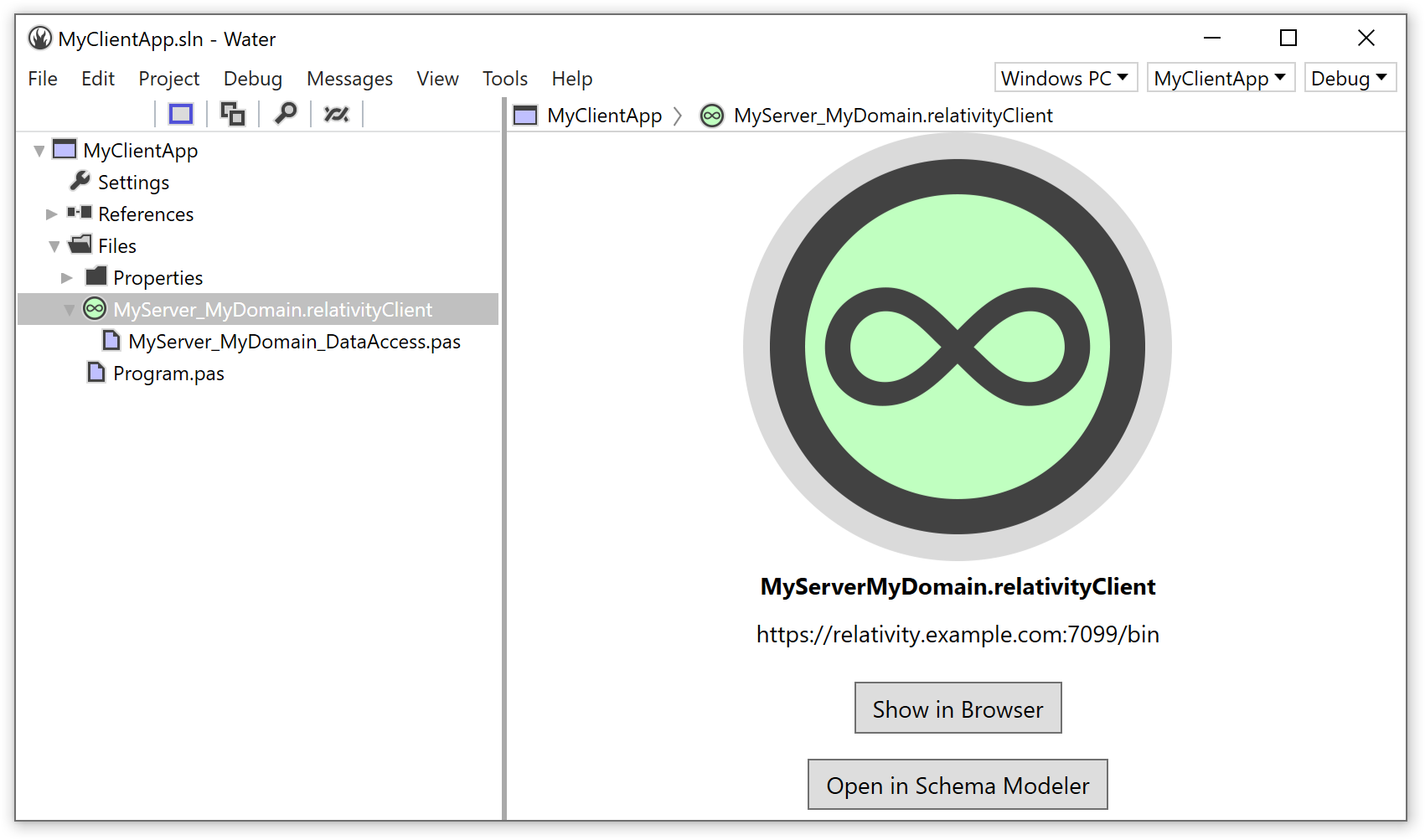Connect to Relativity Server
Fire and Water make it really easy to turn any existing project into a database client app that connects to and works with data from Relativity Server. Simply select "Connect to Relativity Server..." from the "Tools" menu:


This option is available for projects created in any of the four supported languages (Oxygene, C#, Swift and Java) and on all three platforms supported by both Elements and Remoting SDK (.NET, Cocoa and Java).
Note: Fire includes trial binaries of Data Abstract for all three platforms. If you do not have a full version of DA installed, the trial version will be used, and invoking the wizard starts your 30-day trial period. See also Installing Data Abstract in Fire.
Selecting it will bring up this simple dialog, where you can specify the URL of your Relativity Server (complete with port and path to RODL, so commonly that will end in :7099/bin), and then select which Domain you want to connect to:


Enter your server's address and click "Refresh"; the IDE will automatically connect to the server to fetch the list of published domains. Select a domain from the drop-down box, and click "OK"". The IDE will the retrieve necessary data from the server, process it, and generate a handful of new files for your project, all using your server's name and the selected domain as the base name:


The two files are:
- a .relativityClient file
- a _DataAccess source file
You will notice that the IDE conveniently nests these files together (automatically by filename), keeping everything that connects your app to your server in one place.
The YourServer_YourDomain.relativityClient File is a small XML file that serves as the link between your project and the remote server, for this conversion and for future updates. Essentially, it just contains the URL of your server, and is provided for easy access to working with the server from the IDE. For example, you can update your code to changes in the server via this file, as explained in the Working with .relativityClient Files topic.
Finally, the YourServer_YourDomain_ServerAccess source file contains a small helper class that provides a convenient starting point for encapsulating the access to your server from within your client app. Once created, this file becomes "yours", and you will most likely expand it to expose functionality more specific to your concrete server.
The DataAccessAccess class is merely a suggestion and an assistance to get you started, you can feel free to simply remove the file from your project if you want to structure your server access differently within the client app.
Next Steps
After you connected to your Relativity Server, you will want to set up access to one (or more) of the Schemas published by the server.
The Working with .relativityClient Files topic will take you through this process.